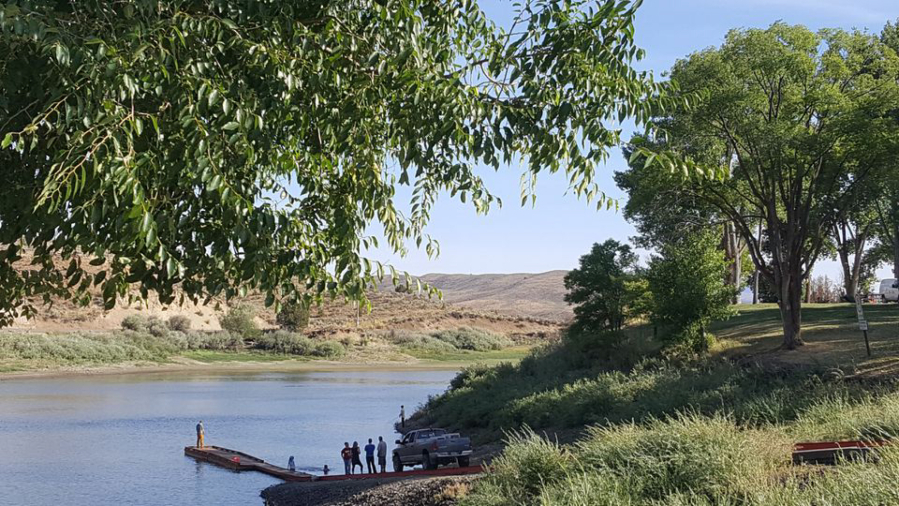Oregon’s most popular campgrounds were a little less full than usual last summer, while some remote state park sites saw a huge surge in campers.
That’s according to data released Monday by the Oregon Parks and Recreation Department, which tracks the number of “camper nights” (each night spent by each camper at a campsite) at all state park campgrounds each year.
The numbers from 2020 show a massive decline in camping statewide, falling 34% from more than 2.9 million camper nights in 2019 to just over 1.9 million last year.
It’s no surprise that the numbers would fall in 2020. The hectic year saw all campgrounds closed between March and June due to the coronavirus pandemic, with most cabins and yurts closed through December. Wildfires in September also made some campgrounds inaccessible, while smoke made camping unhealthy across the state. Some campgrounds were badly damaged or even destroyed by the fires.
What park officials did find surprising is the degree to which camping decreased in 2020 – considering how popular day-use areas remained during the pandemic – as well as the parks that saw influxes of campers.
In addition to its annual data, the state parks department released monthly camping numbers for July and August, typically the busiest season for state park campgrounds. In those two months, all campgrounds at the Oregon coast saw decreases from the previous year, as as did most campgrounds in the Willamette Valley.
The only meaningful year-to-year increases came among a small group of remote campgrounds scattered across central, eastern and southern Oregon, where campers seemed to flock in 2020.
That group That list of newly popular destinations includes names that are usually better known for landing on the list of Oregon’s least-visited state parks: places like Cottonwood Canyon State Park outside of Wasco, Unity Lake State Recreation Site in eastern Oregon and Jackson F. Kimball State Recreation Site north of Klamath Falls.
At the top of the list is Red Bridge State Wayside, a tiny park in the Blue Mountains, which saw an 82% increase in campers last July and August, going from 700 camper nights in 2019 to 1,277 in 2020.
Mark Miller, state park manager for the Blue Mountain Unit in northeast Oregon, said he saw firsthand the increase in crowds last summer, which he said was driven primarily by people from more urban areas in Oregon, Washington and Idaho looking for a remote escape.
“It’s obvious, you look at a map, you can tell it’s an area that doesn’t have a whole lot of visitation,” Miller said. “That seems desirable for folks.”
In addition to Red Bridge, Miller also oversees the campground at nearby Hilgard Junction State Park, which saw a 37% increase in campers last year. The remote parks may lack the grandiosity of iconic sites like Smith Rock or Silver Falls, but both are situated along a beautiful stretch of the scenic Grand Ronde River, where people can go fishing by day and enjoy a quiet night under the stars, he said.
And even when filled to capacity, the campgrounds are far less crowded than most others in Oregon, thanks to how few campsites are actually there.
The Red Bridge campground consists of 10 primitive walk-in sites, with another 10 that can accommodate self-contained RVs. Hilgard Junction has only 18 primitive sites. That’s a far cry from the massive campgrounds at big-name parks like Fort Stevens on the Oregon coast, which boasts nearly 500 campsites, including 26 yurts and cabins.
Primitive camping comes with its own challenges, but it may offer a more comfortable experience for those who felt uneasy around crowds during the coronavirus pandemic, as COVID-19 continued to spread among those in sharing living spaces, work environments or public gatherings. So far, no outbreaks of COVID-19 have been traced back to state park campgrounds, parks spokesman Chris Havel said, but that doesn’t necessarily allay the fear.
As rural residents skipped traditional vacation destinations for campgrounds close at hand, “We saw more people out looking for these out-of-the-way places,” Havel said, “instead of maybe going to the coast, they were staying home.”
He said that any conclusions so far are only educated guesses, based as much on anecdotal evidence as the data itself. Ultimately, he said, there were simply too many variables in 2020 to draw many meaningful conclusions from the annual camping numbers.
Still, the fact that Oregon’s more remote and rugged campgrounds clearly saw a surge in interest may mean more people will continue to opt for a quieter camping experience in the future.
“The lesson from 2020 is yes, tent camping is important, some of these remote sites are important,” Havel said. And while farther afield, they’re much more manageable as well. “They don’t take as much investment or management to get them to operate well.”
In fact, Miller said the parks and campgrounds in his district ran smoother than anticipated last year. Park sites that remained closed to the public saw very little in the way of litter or vandalism, he said, and the visitors who stayed at the campgrounds needed little to no help from park rangers.
That’s a relief for the people in charge. Miller said his staff of 13 rangers was cut down to four last year, as the state parks department faced layoffs following a severe budget shortfall due to the pandemic.
Self-sufficient campers allowed him to remain happy just to see more people in the sparsely visited parks, he said, getting to know the rural Oregon camping experience that he already cherishes.
“It caters to those visitors that like that primitive experience,” Miller said of the more remote campgrounds. “It’s almost like going back in time in some ways.”



